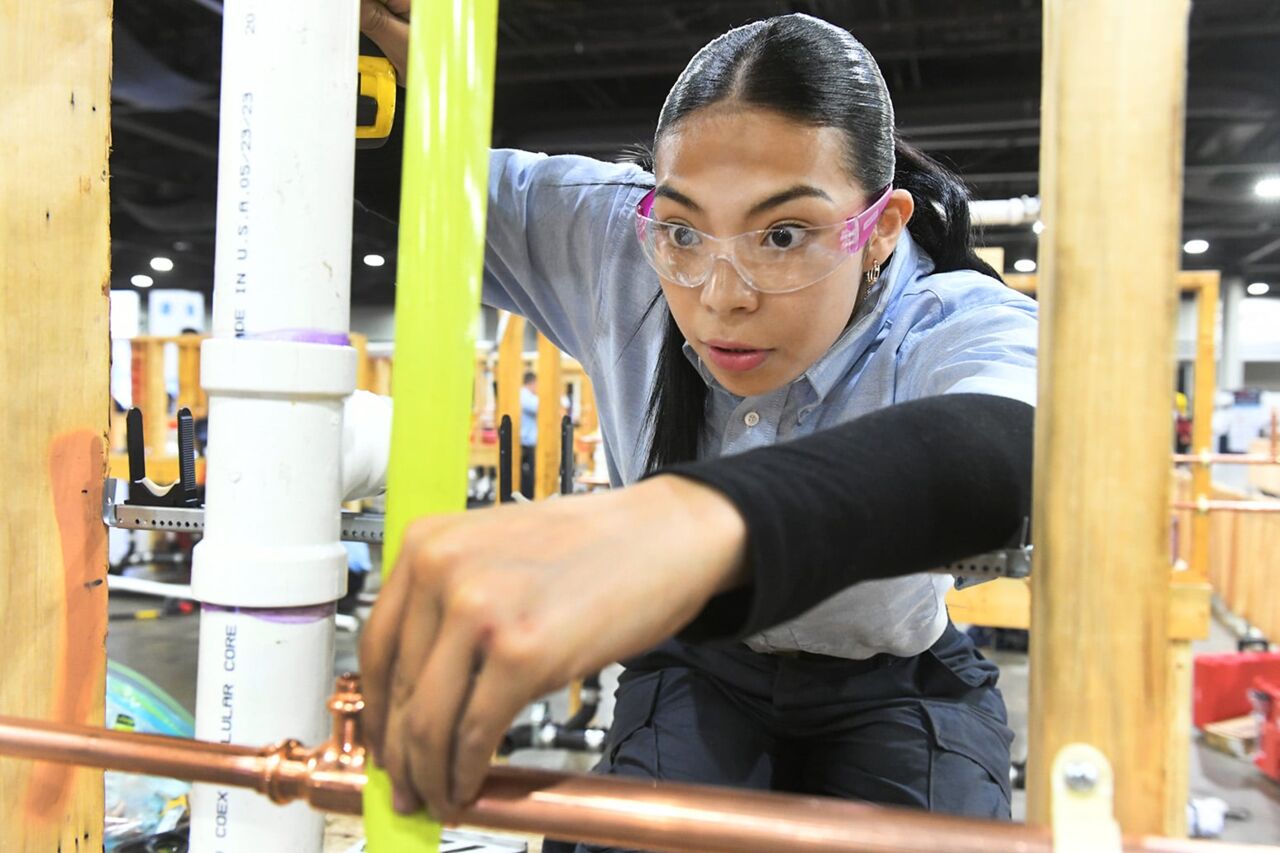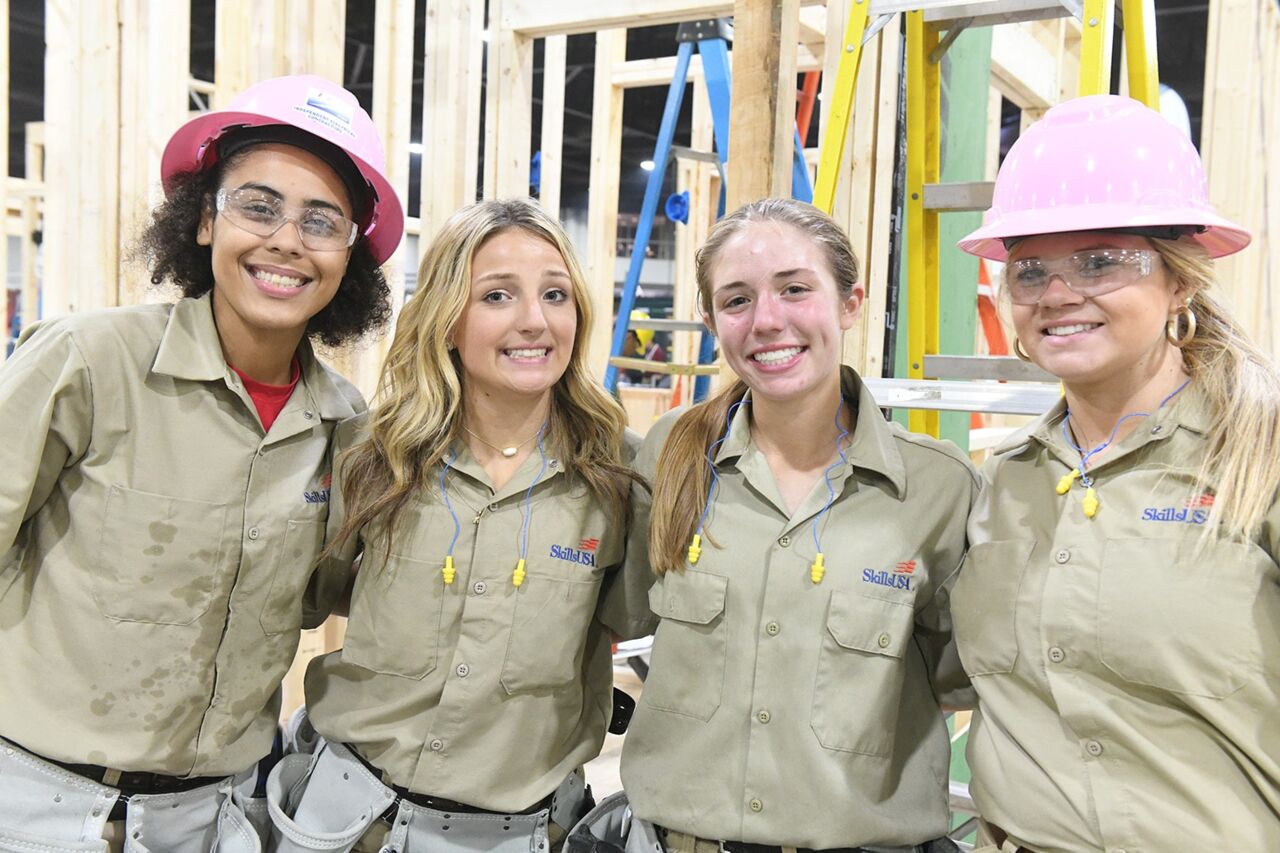Breaking free of traditional classroom learning formats, middle-school, high-school, and college students are taking SkillsUSA programmes and becoming architects of their own futures.
Passing skills onto the next generation
While the word ‘education’ can conjure up images of learning by listening and passive notetaking, many students across the United States of America are taking control of their learning by opting for Career and Technical Education (CTE) with SkillsUSA. Breaking free of traditional “sit down and read” classroom learning formats, middle-school, high-school, and college students are taking SkillsUSA programmes, that range from Broadcast News Production to Crime Scene Investigation and becoming architects of their own futures.
The SkillsUSA Framework is the foundation for all SkillsUSA programmes. It is made up of three components: Personal Skills, Workplace Skills, and Technical Skills Grounded in Academics. The Framework serves as SkillsUSA’s “blueprint for career readiness,” and it’s integrated into classroom curriculum by SkillsUSA advisors across the country. Through this instruction, students are presented with self-led learning opportunities designed to build their technical and life skills. Advisors are on hand to guide students, answer their questions and keep them moving forward, but the core work is done by the students themselves; planning and rolling out activities, problem-solving and acquiring hands-on experience. Educational advisers may go as far as replicating a professional environment within the classroom to immerse students in a business setting.

All of this is to encourage them to grow as rounded individuals. Thomas Kercheval, Communications Director at SkillsUSA, says, “Technical skills, the skills most people would associate with our competition programme, are a big draw for our organization but they’re far from the only focus. Personal and professional skills are equally important to becoming an effective and valued member of the workforce and a responsible member of the community.”
While the format of the training may feel flexible and innovative, the standards SkillsUSA students work to are high. Thomas elaborates, “Throughout the year, while students are trained, their technical skills are being assessed on benchmarks created by industry leaders who have a unique vantage point onto tomorrow’s business needs.” Revisited every year, these “technical standards” ensure that the students’ skills align with industry’s needs and help build a common understanding between employees and employers about what is expected of them.
One of the things we hear constantly from our industry partners is that they would almost prefer to have someone who is less skilled on the technical side but comes to them with personal and workplace skills in great shape. Because the feeling is that these are things that are much more difficult to teach.

The knowledge SkillsUSA students gain in the classroom gets passed down to the next generation, as many SkillsUSA high-school participants choose to take on mentoring roles with middle-school children. These younger pupils become inspired by the enthusiasm of their older counterparts, and it helps nurture their interest in CTE as they themselves move up the school system.
The bigger picture is that developing technical and life skills through CTE creates a positive feedback loop nationally. It helps forge a new generation of resilient and confident workers. That’s why SkillsUSA wants to empower more young people to take control of their studies and career choices. The team knows this must begin by creating a positive environment at school, where students have the confidence to believe in themselves.
Thomas concludes, “Students develop the hands-on skills they need to do well in their competitions, and to become professionals in the trade they’re learning, But they also find other skills that sometimes mean more to them. Students come out of the programme saying things like, ‘I was the shy kid who never spoke. Now I’m speaking in front of hundreds of people’. They feel more confident in themselves, they feel that their voice matters, and they can articulate what they want to say. Even if they don’t go on to work in the area they studied – although many do – they take these other life skills with them.”